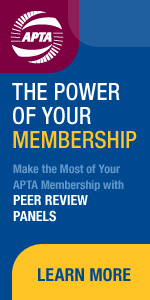

| In This Issue |
| » BREAKING NEWS |
| » NEWS HEADLINES |
| » IN DEPTH: HIGH-SPEED RAIL |
| » COMMENTARY |

Check out the classifieds in this issue to find numerous job opportunities including a General Manager!
| NEWS HEADLINES |
LaHood: High-Speed Rail Will Jump Start U.S. Economy
BY SUSAN BERLIN, Senior Editor
The imminent introduction of high-speed rail in several regional U.S. corridors will jump start the nation’s economy while  creating thousands of jobs for Americans, Secretary of Transportation Ray LaHood told a standing-room-only crowd at a Jan. 21 symposium on high-speed rail issues presented by the Japan International Transport Institute (JITI) and several agencies of the Japanese government.
creating thousands of jobs for Americans, Secretary of Transportation Ray LaHood told a standing-room-only crowd at a Jan. 21 symposium on high-speed rail issues presented by the Japan International Transport Institute (JITI) and several agencies of the Japanese government.
Announcing that DOT has received nearly 260 applications for the $8 billion in high-speed rail funding included in the American Recovery and Reinvestment Act (ARRA), LaHood noted that the technology will “lessen dependence on fossil fuels and support livable communities.” He added: “By building high-speed rail, we’ll be rebuilding America. Isn’t it time we brought good, steady manufacturing jobs back to the U.S.?”
Joining LaHood at the event were three strong supporters of high-speed rail from the House Transportation and Infrastructure (T&I) Committee: James Oberstar (D-MN), chair; John Mica (R-FL), ranking member; and Corrine Brown (D-FL).
Oberstar called the $8 billion in ARRA funds “a down payment” for a move into the future of intercity transportation. While widespread automobile use meant less interest in U.S. passenger rail in the past, he said, “now it changes,” noting that Democrats and Republicans alike continued to fund Amtrak even when the last administration wanted to stop doing so.
“We’ve rediscovered passenger rail, but we need to do more,” he emphasized.
Mica described his experiences with high-speed rail during a visit to Japan and stressed the importance of what he called “true high-speed rail” that operates at 150 to 200 miles per hour rather than comparatively slower service at 110 mph.
“Rep. Oberstar and I are both firmly committed to bringing true high-speed rail to the U.S.,” Mica added. “We want to make sure that conditions along future high-speed routes are conducive to livability.”
Brown noted that the transportation authorization bill introduced by Oberstar and passed last year by T&I includes $50 billion for high-speed rail. “We’re getting real support from the Obama administration on this issue, but we wanted to make sure it’s long-term; the $50 billion is for the six-year life of the legislation,” she explained.
She pointed to Florida’s recent support for a new commuter rail line in the Orlando area, saying: “The state legislature passed authorization for Sun Rail and put its money where its mouth is.”
The sponsoring organizations—Japan’s Ministry of Land, Infrastructure, Transport and Tourism; Ministry of Foreign Affairs; Ministry of Economy, Trade and Industry; and Institute for Transportation Policy Studies (ITPS), along with JITI and with support from The Nippon Foundation—shared their nation’s 45-year history with Shinkansen high-speed rail and discussed how the lessons Japan has learned would apply to U.S. operations.
Sumio Mabuchi, Japan’s senior vice minister of land, infrastructure, transport and tourism, reported that Shinkansen—launched by a government rail agency, later divested into private companies—has demonstrated both safety and profitability in its history. ITPS President Jiro Hanyu agreed, calling high-speed rail the safest mode of transportation and offering to share Japan’s “extensive experience in planning, building, and operating high-speed rail” with U.S. agencies and rail operators.
Dr. Lee Schipper of the University of California at Berkeley and Yuki Tanaka of JITI presented a study showing how the 10 high-speed rail corridors proposed by the Federal Railroad Administration, as well as the Northeast Corridor between Boston and Washington, provide service to the most heavily populated areas of the nation.
Other speakers included Eugene A. Conti Jr., secretary of North Carolina DOT and chairman of the American Association of State Highway and Transportation Officials Standing Committee on Rail Transportation; Manmohan Parkash, principal transport specialist, Asian Development Bank; JITI President Makoto Washizu; and APTA Vice President-Policy Arthur Guzzetti.
| « Previous Article | Return to Top | Return to Main | Next Article » |
|
||||||
| AMERICAN PUBLIC TRANSPORTATION ASSOCIATION |
Telephone (202) 496-4800 • Fax (202) 496-4321
Search Back Issues